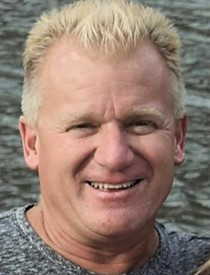ANALYSIS: 5 CITY COUNCILORS CHUCK 2 YEARS OF PLANNING OUT THE WINDOW, VOTE TO LEAVE WATER SYSTEM IN CRIPPLED STATE
Before contamination was found in our wells on the north side, Westfield’s water infrastructure was already in shabby condition. Our water tanks, used to store water and supply water pressure to the system, have needed repairs for years. One of water tanks got so bad that it risks collapsing and requires total replacement. Wells #5 and #6 on the south side of the city are very low yield, unreliable wells, requiring us to make improvements to our neglected connection to Springfield’s water supply in case we need to draw extra water during periods of high demand. The simple fact is years of low water rates resulted in inadequate funding and it was starting to catch up with us.
Then, two years ago, fate landed a severe body blow to our already beleaguered infrastructure. Two wells, #7 and #8 on the north side, had to be taken offline as a result of contamination. This threw our water supply into an extremely precarious position. Recognizing the severity of the problem, the water department went into action and started exploring options to restore our city’s water supply to full capacity. But then the water system caught two more direct punches to the head with a severe drought and then well 2 coming offline as a result of contamination making our situation even more dire.
The upshot of all this is that the redundancy built into our water supply infrastructure is essentially non-existent. Things can and will go wrong and when they do, we are in trouble. The fragility of our water supply was demonstrated after an accidental water line break was not able to be easily overcome by our crippled system, resulting in a loss of water pressure on to Westfield University and the surrounding neighborhoods for days.
Though the water department has mapped out a plan to correct all these issues, Westfield’s water system remains fragile until these plans are executed. The tanks have still not been repaired or replaced. Three wells remain offline. Though the remaining well on the north side, well #1, is relatively clean and below proposed state levels for contamination, that could easily change as it has to suck harder to keep up with summer demand. And without the redundancy in our system, the odds of a total loss of water pressure on the north side of the city for long periods of time are greatly increased.
Five more obstacles were just thrown in our way in the form of five city councilors who, for a second time, made it impossible to execute the plan to solve these problems by voting against the the water bond. As a result, they:
* Halted the completion of the filtration plant on well #7 and #8 which was expected to come on line early next year. Bench tests have shown that the filtration plant would have effectively brought the level of contamination down to non-detectable levels for 38 different PFC compounds. Detectable levels are around 2 parts per trillion.
* Jeopardized funding and the approval for a temporary filtration plant on well #2 that was expected to run only for a few months until the filtration plant on #7 and #8 was completed.
* Stopped the replacement for the failing water tank on the north side of town.
* Thrown plans that have been carefully developed by qualified experts over the past two years into chaos.
* Made it impossible to install a filtration plant on well #1 and #2.
Why did they do this? Unfortunately, these councilors are letting a minority of radical voices in our community trump rational decision making.
For the first bond vote, one of the rallying cries these councilors adopted was that the plans by the water commission to rebuild our water system was not fiscally responsibility. They began referring to the projects as a “money grab.” They claimed that other options were not explored when, in fact, they had been. There was also a healthy dose of conspiracy ideation mixed into their opposition. Councilor Matt Emmershy, one of the more vocal opponents to the bond, made preposterous claims about citizens having their first amendment rights trampled. And despite having their questions answered over the course of several meetings, Councilors Allie, Emmershy and Surprise took every opportunity to try to paint the mayor as not being forthcoming with information. The truth of the matter was that most of their questions had been answered and the questions they demanded answers to were immaterial to the bond.
The other rallying cry of these councilors was a seemingly well-intentioned but completely unrealistic and misguided attempt to save rate payers from footing the bill for the water system improvements by waiting for federal government funding. But it was patently obvious to all legal experts, and even most casual observers, that the federal government wasn’t suddenly going to pony up the cash we needed to move forward on our plans any time soon.
For the second bond vote, the councilors moved the goal posts at the last minute. The councilors began questioning the effectiveness and safety of the planned filtration system. Even though laboratory bench-testing by qualified experts has shown that levels of the contaminants can be reduced to undetectable levels, this was suddenly not good enough for them. They have now adopted the radical position that even non-detectable levels are unacceptable and that we must get our water from completely untainted sources. But this simply not a viable solution. Getting untainted water from Holyoke, for example, would require a new treatment plant to be built, take years to implement, and probably be much more costly with little benefit to public health.
And so here we are without a way forward. As a result of not having the water bond, residents who could have had a highly effective solution to the contamination problem in place this time next year will have to rely on a patchwork of band-aid, temporary solutions cobbled together with inadequate funding. The real irony is that despite new claims that only untainted water is now acceptable, it is now very likely that residents will ingest more contaminants over a longer period of time while they wait for some unknown alternate plan to be approved by these councilors. To add insult to injury, residents on the north side are in much more jeopardy of not having running water into their homes.
Where do we go from here? Nobody knows. With our water supply on the ropes, I guess the only option is just pray and hope a knockout punch never lands. God help us.
Sincerely,
Steve Dondley








